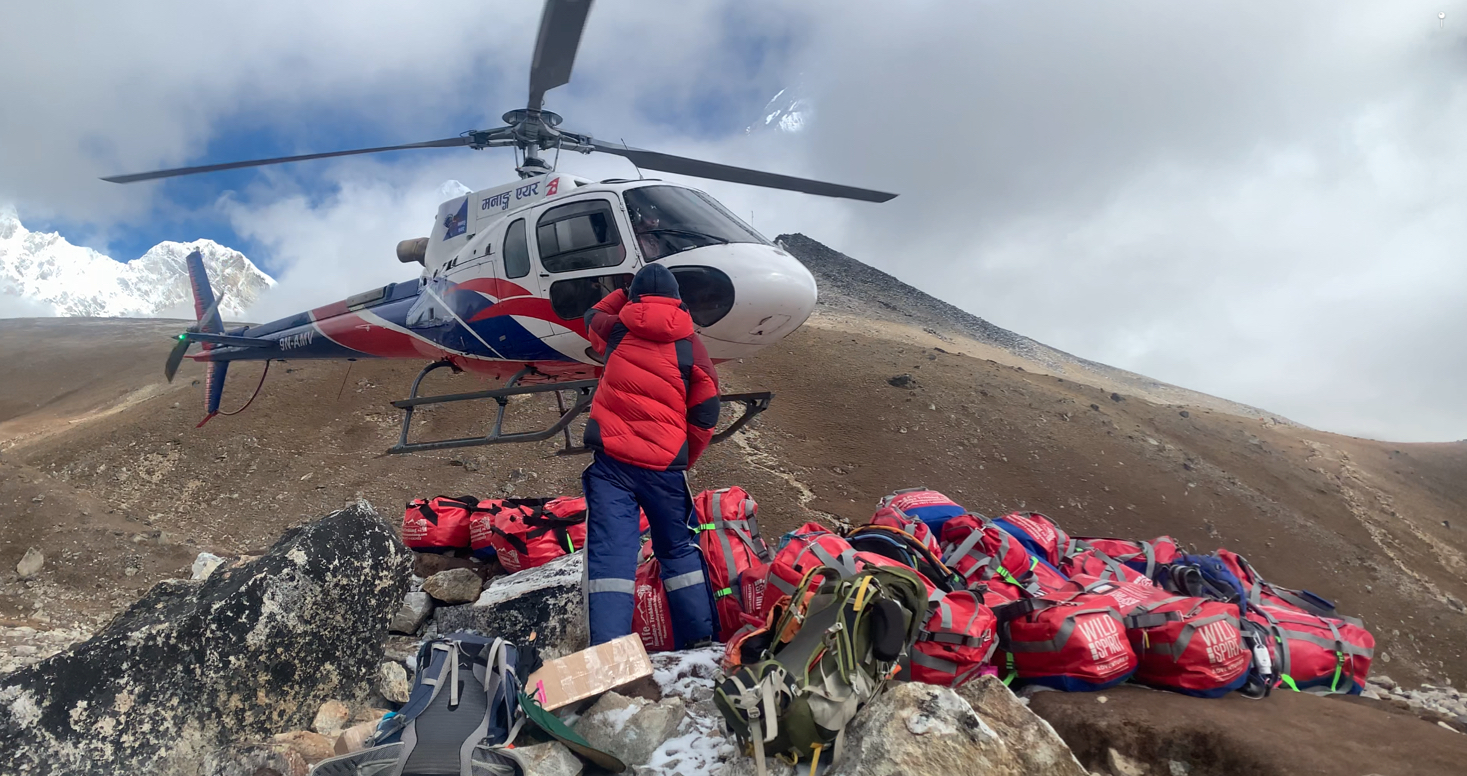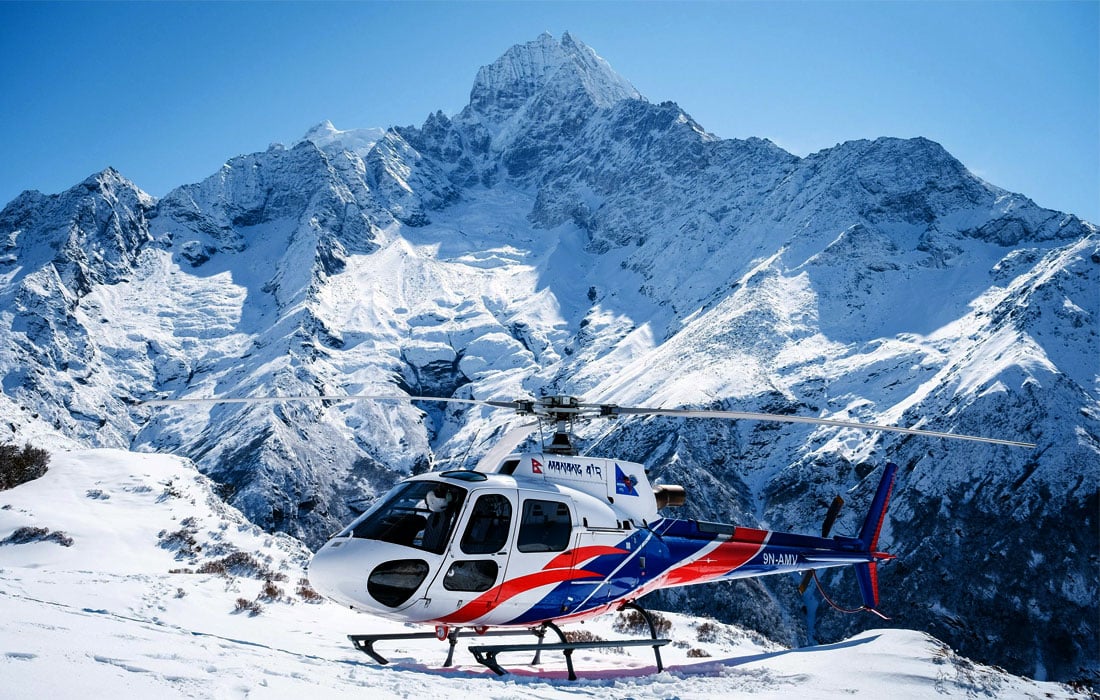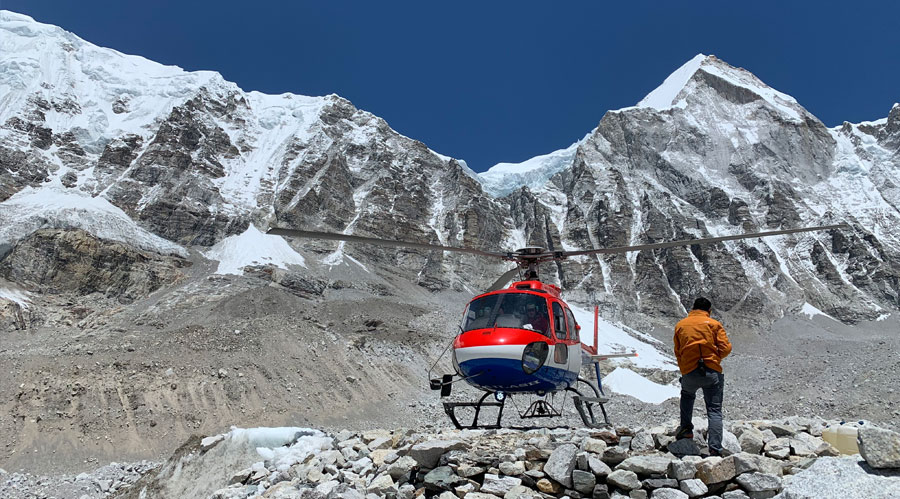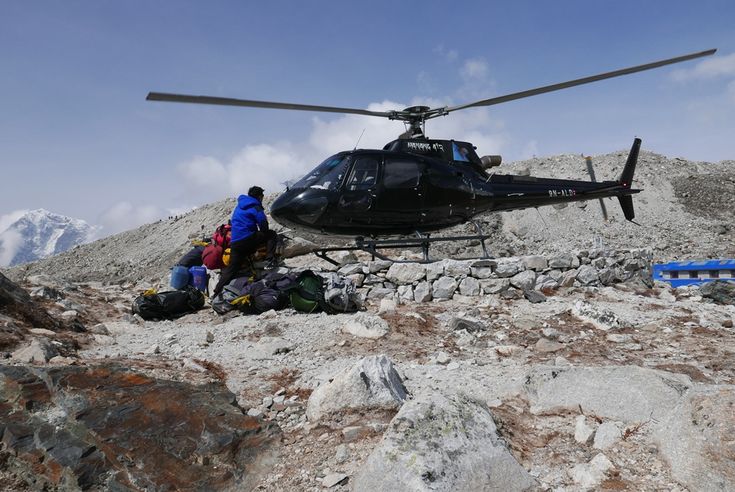When it comes to traveling to different destinations, safe and convenient travel is the only choice for an individual traveler to travel efficiently. More than just an air ambulance service, Heli on-call is a vital force transforming healthcare in Nepal. With a fleet of helicopters and a team of dedicated professionals, We provide critical medical evacuation and mountain rescue services in some of the world's most challenging geography.
Where traditional ambulances struggle, Heli on call reaches the unreachable. We bridge the gap for emergencies in remote villages, mountainous regions, and trekking routes, bringing critical care to those far from traditional medical facilities.
We support search and rescue operations, assist trekkers in distress, and deliver essential medical supplies to isolated communities.
Time is of the essence in emergencies. Heli on call's rapid response capabilities can mean the difference between life and death, transporting patients swiftly and safely to specialized hospitals. We are revolutionizing healthcare in Nepal. We improve access to critical care, promote tourism safety, and save countless lives every year. By supporting us, you invest in a healthier and safer future for Nepal.
Our Approach to Medical Evacuation in Nepal
In medical situations, speed is of the essence in Nepal's beautiful but also dangerous environment. Unpredictable weather, poor road conditions, and challenging surfaces can make standard ground ambulances all but worthless. This is where our roles comes into play, its helicopter fleet acting as a lifeline for people in need of assistance.
Imagine a heart attack victim in a remote village, hours away from the nearest hospital. Or a trekker struck down by altitude sickness, miles above the nearest road. Ground transport could stretch rescue into a desperate fight against time, with every minute diminishing survival chances. Our helicopters, however, can reach these patients within minutes, their speed defying distances and geography.

These marvels of modern medicine are equipped with state-of-the-art medical equipment, transforming them into flying intensive care units. Trained medical personnel accompany each flight, providing critical care during transport, stabilizing patients, and minimizing potential complications. This ensures smooth transitions between the point of rescue and advanced medical facilities, significantly improving patient outcomes.
The impact is undeniably life-saving. A young woman struck by lightning on a remote peak was whisked to safety by us, receiving essential medical attention and making a full recovery. Another example saw a critically ill child airlifted from a village clinic, his life was saved thanks to the swift intervention. These stories, just a handful among many, paint a powerful picture of Helioncall's undeniable impact.
Cost concerns are understandable, given the specialized nature of this service. However, We recognize the crucial role affordability plays in accessibility. We strive to offer various payment options, collaborating with insurance providers and seeking partnerships to reduce costs for patients. Additionally, we actively engage in fundraising initiatives to ensure their services remain accessible to those in dire need.
Specialized Expertise in Mountain Rescue
Heli on call is not just an air ambulance service but a vital lifeline in Nepal's mountains. Their specialized team, equipment, and expertise help conquer the challenges of high-altitude emergencies, saving lives and preserving the magic of adventure for all.
Heli on call is not just a service; it's a story of courage, expertise, and unwavering dedication to saving lives in the face of daunting challenges. Our symphony of skills plays on, a melody of hope echoing through the Himalayas.

Medical emergencies in the mountains pose unique dangers and challenges. We boast a team of experienced pilots, rescue personnel, and medical professionals who are specially trained for mountain operations. Our expertise enables them to navigate treacherous terrains and swiftly respond to emergencies, ensuring the safety of patients and rescuers alike.
Our specialized equipment and procedures further contribute to our ability to perform safe and efficient mountain rescues. The organization leaves no stone unturned in ensuring that they are well-equipped to handle any situation that may arise. Through rigorous training and a commitment to continuous improvement, we ensure that our rescuers are always prepared to face the challenges of high-altitude medical emergencies.
Additionally, when trekkers and climbers go missing, we support search and rescue operations, providing invaluable assistance to the mountaineering community.
Why is Heli on call different from other air evacuation companies?
Our medical evacuation and mountain rescue services offer key advantages over traditional methods. Our fleet of helicopters, capable of swift transportation, enables them to reach remote areas quickly. The organization's steadfast commitment to safety, efficiency, and affordability sets it apart, ensuring that the people of Nepal have access to life-saving healthcare services when they need it the most.
In addition to our role in saving lives, our organization also positively impacts Nepal's tourism industry. With our services, trekkers, and climbers, both domestic and international, can venture into the mountains with the reassurance that a reliable emergency medical response is within reach. This support bolsters confidence in Nepal as a destination for adventure and exploration, contributing to the growth of tourism and the country's economy.
Our passion for transforming healthcare in Nepal is evident through our unparalleled commitment to medical evacuation and mountain rescue. By harnessing the power of helicopters, specialized expertise, and a dedication to safety and affordability, We are revolutionizing healthcare accessibility in the country. From the highest peaks to the lowest valleys, our presence ensures that no one is left behind when it comes to receiving life-saving medical care.
Helicopter Rescue for Altitude Sickness Case in Nepal
Helicopter evacuations for altitude sickness cases. Altitude sickness can strike unexpectedly, turning a mountain adventure into a medical emergency. Here, we explore the vital role helicopters play in swiftly responding to such situations.
Understanding Altitude Sickness
Altitude sickness is a condition caused by reduced oxygen levels at higher elevations, especially above 5,000 feet. Symptoms can range from mild, such as headaches and nausea, to severe cases involving high-altitude cerebral edema (HACE) or high-altitude pulmonary edema (HAPE). Recognizing the signs early on is crucial for timely intervention.
The Decision-Making Process
When altitude sickness strikes and traditional descent becomes impractical or impossible, our experienced team at Heli On Call initiates a careful decision-making process. The severity of symptoms, weather conditions, and the feasibility of a helicopter evacuation are all taken into account.
Communication with us
Efficient communication is the linchpin of successful helicopter rescues. In altitude sickness cases, we emphasize the importance of swift and accurate information relayed to local rescue authorities. Satellite phones, radios, and other communication devices play a pivotal role in ensuring a coordinated and timely response.
The Role of Weather Conditions
Helicopter rescues are inherently influenced by weather conditions, and high altitudes add an extra layer of complexity. Pilots assess weather patterns meticulously, considering factors such as wind speed, visibility, and the stability of the aircraft. Safety is our top priority, and decisions are made with utmost caution.
Preparation for Evacuation
In the event of a helicopter rescue for altitude sickness, preparation is paramount. Our skilled medical personnel work diligently to stabilize the patient's condition and ensure they are properly secured for transport. The goal is to provide effective medical interventions during the evacuation.
The Helicopter Evacuation Process
As the helicopter descends from the sky, the urgency of the situation is palpable. Our pilots execute precision landings at designated sites, carefully chosen for their safety and accessibility. The medical team takes charge, providing ongoing care while the patient is secured for the journey to lower altitudes and definitive medical treatment.
Popular Destinations for Helicopter Rescue in Nepal
Helicopter Rescue from Everest Base Camp II
Overview: Situated at an elevation of approximately 21,300 feet (6,492 meters), Everest Base Camp II is a critical staging point for climbers attempting to reach the summit of Mount Everest. The high altitude and challenging terrain pose a significant risk of altitude sickness, prompting the need for helicopter rescue services.
Helicopter Rescue Significance: In the event of medical emergencies, deteriorating weather conditions, or other unforeseen circumstances, helicopter rescue services become crucial. The ability to rapidly evacuate climbers or trekkers from Everest Base Camp II ensures prompt medical attention and reduces the risk of complications associated with high-altitude illnesses.
Helicopter Rescue from Everest Base Camp I
Overview: Nestled at an altitude of approximately 17,600 feet (5,364 meters), Everest Base Camp I serves as a primary acclimatization stop for climbers before ascending higher. The challenging ascent to this point can strain individuals, and altitude-related issues may arise.
Helicopter Rescue Significance: Helicopter rescue services are essential at Everest Base Camp I to address medical emergencies, such as severe cases of altitude sickness, which may necessitate immediate evacuation. The rapid response capability of helicopters is vital for ensuring the safety and well-being of those at this critical stage of the Everest climb.
Helicopter Rescue from Everest Base Camp
Overview: Situated at an elevation of about 17,600 feet (5,364 meters), Everest Base Camp is the starting point for expeditions to the world's highest peak, Mount Everest. It is a popular destination for trekkers and climbers alike, attracting adventurers from around the globe.

Helicopter Rescue Significance: Altitude sickness and other high-altitude-related issues are common concerns at Everest Base Camp. Helicopter rescue services play a pivotal role in evacuating individuals facing severe health challenges, allowing them to receive timely medical care at lower altitudes.
Helicopter Rescue from Langtang Region
Overview: The Langtang Region is known for its stunning landscapes and trekking trails, offering a less crowded yet equally rewarding experience. The region includes Langtang Valley, Kyanjin Gompa, and the Langtang National Park.
Helicopter Rescue Significance: Helicopter rescue services are crucial in the Langtang Region due to its remote and challenging terrain. In case of emergencies, such as injuries or severe altitude sickness, helicopters provide a means of swift evacuation to medical facilities.
Helicopter Rescue from Manaslu Region
Overview: The Manaslu Region is renowned for the Manaslu Circuit, a trek that circumnavigates the eighth-highest mountain in the world, Mount Manaslu. The region offers a diverse range of landscapes and cultural experiences.
Helicopter Rescue Significance: Remote areas and high elevations in the Manaslu Region make helicopter rescue services vital. In case of emergencies, especially those related to altitude sickness or injuries, helicopters ensure a timely and efficient evacuation to medical facilities.
In both Everest and other regions of Nepal, helicopter rescue services are instrumental in ensuring the safety and well-being of adventurers who explore the country's challenging and breathtaking landscapes. These services demonstrate the commitment to providing swift and effective assistance in the face of altitude-related challenges and unforeseen emergencies.
Conclusion
Our mission is to revolutionize healthcare access in Nepal, especially in remote and challenging terrains. We envision a future where every individual, regardless of their geographical location, can receive timely and quality medical care. Our commitment is rooted in the belief that advanced medical services, including helicopter rescue and evacuation, are essential for ensuring the well-being of individuals exploring the breathtaking but sometimes perilous landscapes of Nepal.
Heli on call is dedicated to providing swift and efficient emergency medical services, particularly in high-altitude regions like the Everest Base Camp, Langtang, Manaslu, and more. We understand the unique challenges posed by Nepal's diverse topography and aim to bridge the gap between remote areas and quality healthcare.

In conclusion, Heli on call stands at the forefront of healthcare transformation in Nepal, embracing the challenges posed by the country's diverse and often remote landscapes. Our unwavering mission to provide timely and advanced medical services, particularly in high-altitude regions, reflects our dedication to ensuring the safety and well-being of all those who venture into the majestic terrains of Nepal.
As we continue to evolve and expand our services, we urge you to join us on this journey. Explore the possibilities, understand the impact of our initiatives, and consider being a part of the transformation. Together, we can make a difference in healthcare accessibility, saving lives, and ensuring that every individual has the opportunity to experience the beauty of Nepal with the reassurance of quality healthcare at their fingertips.







